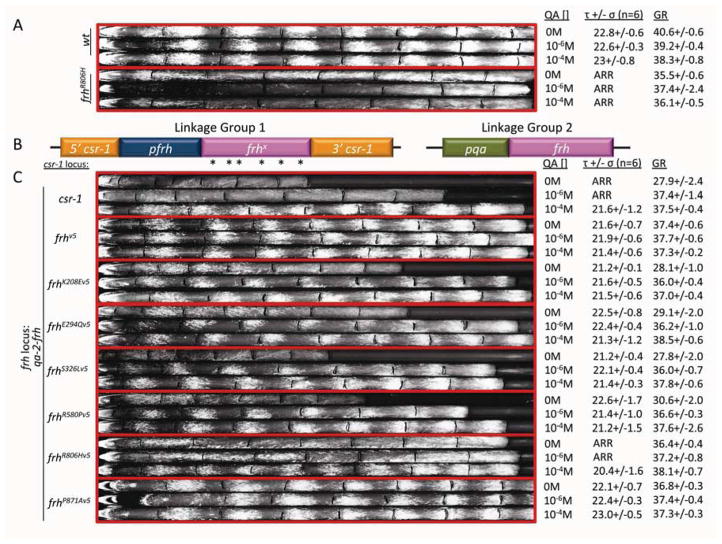Figure 2.
The helicase regions provide the FRH functions that are essential for growth. (A) Race tube assay of wild type and FRHR806H shown as three representative race tubes grown with the three concentrations of inducer (QA). (B) Strain genotypes of experimental strains (bottom eight groups of three): Linkage group 1; at the csr-1 locus: mutant versions of frh driven by the frh promoter. Linkage group 2; at the frh native locus: frh driven by the QA-inducible qa-2 promoter. (C) Race tube assay of qa-2 driven FRH and the mutant knock-ins at the csr-1 locus. Each strain contains an inducible copy of wt frh as well as a native promoter-driven but mutated copy of frh at the csr-1 locus and is shown as three representative race tubes grown with the three concentrations of inducer (QA). Less than wild type growth rate indicates a level of functional FRH inadequate for full rescue of essential functions. Restoration of growth indicates that the induced wt FRH was able to supply the essential functions (QA[] = concentration of QA, τ= period in hours, σ = standard deviation, n = number of race tubes, GR = growth rate in mm/day).

